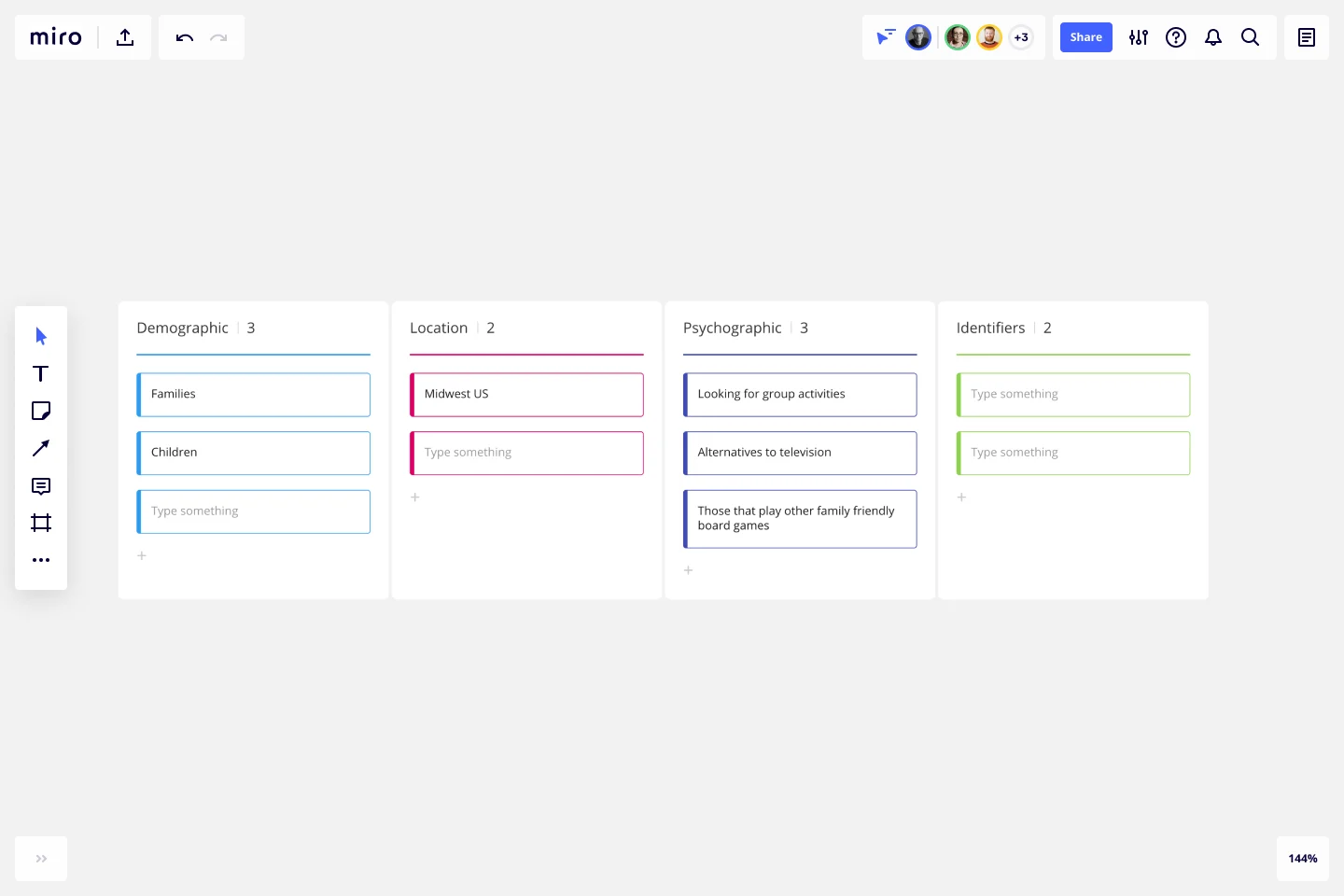When it comes to marketing in today’s world, you can take a million and one different avenues. Should you focus all of your efforts on growing a single platform, or dip your toes into every app? Should you post three times a day or three times a week? Is it important to send emails? How much should you spend on Facebook ads? Should you spend any money at all?
There’s no limit to the number of decisions marketing teams need to make. And with seemingly endless possibilities ahead, it’s easy to get overwhelmed and not know where to begin.
Today’s marketing strategies are not about throwing a massive fishing net out in the ocean and catching everything you can. Instead, in a world of vast, unlimited opportunities, it’s more important to niche down, find your people, and give them your total, uninterrupted attention. Your potential prospects, client retention rate, and bottom line will benefit greatly from narrowing your focus to people who will actually want and benefit from your products or services.
In other words, you’ll catch way more fish — who are willing to pay way more money — using a single pole in your smaller, perfectly designed pond than you will with a net in a vast ocean.
Starting from scratch is the best place to begin clarifying and laying out your marketing efforts. In this guide, we’ll take you through the exact steps we use with clients to create a strategy that feeds valuable information to an interested audience, nurtures those relationships until they’re customers, and keeps their loyalty strong for the long haul.
Choose your target audience
Before you can begin to reel in your ideal audience, you first have to determine who they are — and that requires doing a little bit of homework.
Your target audience is the group of people who are most likely to buy your products and services. They’re the ones currently suffering from the problems your brand can solve. They’re the people actively looking for advice and guidance in your area of expertise. Meaning, they are your ideal customers to serve and sell to.
Going about finding these people will require some effort initially, but once you identify them, you can begin building a brand that naturally draws them in. It’s the first step in creating a marketing strategy that will position your brand as a trustworthy authority in your field.
Choosing your target audience is all about research and asking the right questions. You have to get really clear on not only who your audience is but what they want as well. To successfully market to your audience, you need to know their fears, dreams, struggles, desires, challenges, goals, and obstacles.
So let’s get started by answering the following questions to identify your target audience:
- What gender does your ideal customer identify as?
- What age are they?
- Ethnicity?
- Do they live in a particular kind of area?
- What is their average income?
- What are their favorite social media apps to use?
- What problem are you helping them to solve?
- What are the top 3-5 things they struggle with when trying to solve this problem on their own?
- What are they hoping to achieve by solving this problem?
- What are some common fears they have about solving this problem?
- What alternative methods have they tried to solve this problem?
Compile all of your answers into a document you can refer to and add to over time as you learn more about your audience and what they want. For this, you can use a target audience template by Miro.

Now that you’ve got your ideal audience down, it’s time to rework your brand so that it caters specifically to them.
Create a brand that caters to your target audience
Going back to the document you created, look into the kinds of brands and companies your target audience is already patronizing. Make note of similar colors, logo designs, names, and copy that seem consistent. These will be your guidelines and inspiration for creating an overall look that matches what your audience already enjoys.
First, start with your colors. You’ll want to stick with three main colors: a base, an accent, and a neutral. Your base color will be the one you use the most, so think about which color matches your brand’s personality and attracts your target audience. Your accent will be the second most used color, followed by your neutral. You can use a color palette tool to help you make your selection.

Next up is your logo. Think not only about how it looks but how you can make it recognizable and stand out from the crowd. You want something that draws customers in but also showcases the unique personality of your brand. Canva is a great, free tool for creating logos because it has tons of premade templates to choose from.

And finally, you need to select your brand name. While choosing something that aligns with your services and taps into the needs of your audience is important, it’s also a good idea to make sure it’s short. Never go longer than three words so it can easily fit on a logo or other branding element.
Set up a digital presence
In this day and age, people use the internet every single day to connect, share, and look up new information. Therefore it’s imperative to have a website and relevant social media accounts whereby your target audience can find you. In addition, a digital presence provides you with a direct connection to your customers so that you can learn from them and begin to nurture your relationship by providing free content.
Be it a blog on your website or posts on Instagram, providing valuable free content to your target audience positions you as an expert in your field as well as someone they can trust to help with a specific problem they’re facing.
For instance, at Gerber Labs, our customers would constantly contact us to ask questions about our ordering process and want specifics on printed circuit boards (PCB). Based on customers’ questions and feedback, we decided to update our blog content to include in-depth articles addressing these topics.
As a result, we developed content answering our customers’ top questions like what is a printed circuit board, what are the differences between a 2-layer and 4-layer PCB, how to estimate PCB cost, and how to buy a circuit board. Now, this content brings in more than half of our organic traffic every month.
The quantity of the content is not as important as the quality, so make sure that whatever you’re putting out there is valuable to your audience. And whether you decide to have a presence across different social media platforms or blog posts, make sure that your branding and content is cohesive across the board.
Building a digital presence will take some work in the beginning to set everything up and get your profile in front of the right audiences, but once you do, it can be a great virtual place to find and connect with potential customers. If you don’t have the time to dedicate to this part of your business, consider hiring a web designer or marketing firm to manage and grow your presence online.
Determine your value proposition
Your value proposition is what makes your product or service stand out in the marketplace. It’s what differentiates you from your competitors — and it’s the reason someone would take the leap and purchase your product instead of another similar version.
Your value proposition should state:
- what people can expect from your business;
- what problem you can solve;
- and how you solve that problem.
All strong value propositions are relevant to the customer, show how you can provide real value, and give a clear distinction as to why your brand is different from others on the market.
Every business and brand has a value proposition, and determining yours is crucial to your overall marketing strategy. Once you have your unique strengths clearly identified, you can use them in your branding, copy, and content to attract new customers. You can also use your value proposition to write your mission statement.
For example, Gerber labs was founded on the premise of launching an eCommerce platform that would allow engineering students, small businesses, and hobbyists to order small quantities of printed circuit boards (PCB). Our research had determined that this demographic was overlooked by the PCB industry. Therefore, the idea of launching Gerber Labs became a reality.
So how do you determine your value proposition? Start by asking yourself what makes you unique compared to your competitors? What benefits or product features can you offer customers that others can’t? How does your service better solve their problem compared to other similar offers available?
You can even take the viewpoint from your customer on this one and ask: what’s in it for me? Why should I care?
And if you really want to step up the strength of your value proposition, see how it might connect to some of your target audience’s pain points that you identified in the first step. Find that and you’ll be able to market those strengths heavily in your digital strategy.
Set a budget and stick to it
Now that you have the foundation of your marketing strategy set, it’s time to determine how much money you want to invest in these efforts. It’s easy to get carried away with the latest marketing tools and tactics, especially when you’re just getting started. Every dollar spent feels like an investment into the future of your business, and even though it is, you don’t want to spend all of your hard-earned cash on marketing. You need to set a limit on how much you’re willing to spend so you can use the money on other future projects or unexpected emergencies.
So before you start putting money into your marketing efforts, you have to first set a budget for yourself and stick to it.
The U.S. Small Business Administration recommends spending 7-8% of your gross revenue for marketing if you’re bringing home less than $5 million in sales. Now, start-ups who might still be in their first year of business, are likely not making that kind of profit yet, so you’ll want to start even smaller. Some people even suggest going as low as 2% to 3% of your revenue as per the USSBA.
No matter what amount you choose to spend on your marketing efforts, our advice is to start small and work your way up. Putting a little cash into advertisements and gross strategies can help you determine which ones work for your business and which don’t. That way, when your income starts to increase over time, you know where your marketing dollars will make the most impact for your bottom line.
Social media marketing is probably one of the most affordable options because it allows you to create paid ads for as little as $1 a day. While that might not have the biggest impact at first, it can greatly help your wallet to avoid investing all of your money into marketing while you’re still experimenting with what works.
Create goals and track them
Marketing is a never-ending experiment. You’ll constantly have to adjust and pivot to your customers’ wants, needs, and desires as well as how the market changes over time. And the only way to know if what you’re doing is actually working is to set goals and track your progress.
Making goals for yourself will help motivate you and give you something to continuously improve upon. Focusing on a clear goal is a much easier and faster path to success rather than aimlessly posting here and there, hoping it’ll provide some kind of results.
When you’re setting marketing goals, it’s helpful to follow the SMART strategy. That is, make sure your goal is:
- specific;
- measurable;
- achievable;
- relevant;
- timely.
Specific goals will keep you motivated with a clear destination in mind. Raising $10,000 within 5 months is a lot more inspiring and motivating than simply “making more money.”
Measurable goals also tie into that specificity. The goal of “making more money” is harder to measure because it could mean you’re making anything from an extra buck a month to two million a year. If you’re not sure that your goal is really measurable, see if you can attach a number to it. Numbers never lie.
Having an achievable goal will prevent you from the emotional distress of not meeting expectations that were set too high. There’s nothing wrong with breaking down a larger goal into smaller steps. In fact, it will keep you motivated for the long-haul of achievement. Realistic goals also fall in line with this thinking. If you want to make $10,000 a month, starting with $1,000 and working your way up is a much more reasonable strategy.
And finally, you want your goals to be timely. Give yourself a deadline and hold yourself accountable to meeting it. Whether it’s a long or short-term goal, you’ll be way more likely to make it happen if you have a due date in mind.
Conclusion
Creating a marketing strategy for your startup is a crucial part of the process. But it doesn’t have to be hard. When you use these simple steps, evaluate your time and budget constraints, write down your goals, and come up with strategies for each one, will make your marketing efforts much easier.
Creating your marketing plan is the first step in getting your business off the ground.







